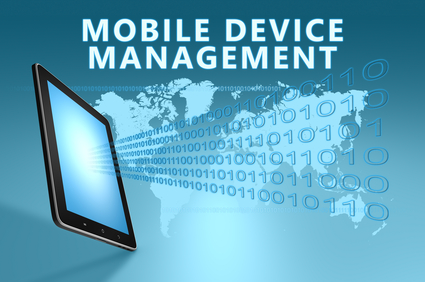Why Most Large Corporations are Opting-In for Mobile Device Management
-----and what to look for in today’s MDM

To opt-in on mobile application or not, is a question that no large or medium-sized corporation can bypass. With the plethora of employee-owned devices being used, not only for personal pursuits, but as an extension arm for accessing company IT, including sending emails on the fly, new issues in data security are raised that might tempt some corporations to close the door on any outside access from employees. While blocking approach to “everything” might be a simple hard-line solution, it actually raises security issues of its own. Techies may rise to the challenge of breaching corporate IT security so that they can gain access to needed information when not in the office, further comprising sensitive company information.
Most corporations, then, are embracing Mobile Device Management (MDM) rather than smashing use of employee owned devices, and BYOD is becoming an as-recognizable acronym as “IT” itself—Bring Your Own Device. Three-fourths of all large corporations have implemented Mobile Device Management, and Forrester Research predicts that by 2016, more than 200 million employees will be able to use their own smartphones and other remote devices to access corporate apps. SC Magazine for security professionals reports that 60% of Cisco employees, as one example, access company IT through their personal mobile devices, in addition to a higher percentage doing so through personal computers.
With the ability to use of such outside devices such as smartphones, tablets, Androids, and Blackberries to access company IT, security is the corporate keynote. Kristin Bent of technology news magazine CRN notes that “this influx of employee-owned devices in the corporate world is introducing a slew of new security concerns for IT teams.” Global research and advisory firm Forrester Research states, “The proliferation of both employer- and employee-owned mobile devices in the workplace presents new challenges for IT management and security.” SC Magazine high-tech expert Michael Scovetta encourages administrators to “maintain comprehensive security threat model for the use of mobile devices in the enterprise” to protect sensitive company data.
A plethora of software applications have sprung up in response to the demand for MDM solutions, so much so, that MDM has almost become a commodity. Recognizing the capabilities, strengths and weaknesses of MDM systems, then, is paramount to implement a viable MDM solution.
While a simplistic solution might be to favor, for example, Apple’s own MDM solution, Forrester points out that with such a wide variety of devices, operating systems, apps, all of which may not subscribe to a unified operating system or be up to current organizational IT protocol, an MDM solution that embraces a wide variety of devices is of importance. 20-year operating system administrator and writer/reviewer for ZD Net Ken Hess also develops this idea, stating that the “single most important qualifying or disqualifying point is that the MDM software must support more than a single platform.” It MUST support Apple’s iOS, Android, and Windows, with support for other platforms also a plus.
Additionally, Tyler Shields, MA, MBA, a leading expert on mobile, application and security topics, and writer for Forrester, develops the thought that today’s MDM market requires more-advanced features that include “content and collaboration systems, [and] security components at the network and application level.” Advanced device performance feedback also adds “value” to MDM. Tyler also encourages looking for “partnerships and integrations with secondary market offerings” to further differentiate MDM systems.
An often-noted advantage of running with rather than rejecting a Mobile Device Management solution is the obvious economic benefit to corporations, with employees using their own devices, rather than corporate computers, in their off-site access to corporate IT. However, this may not be the primary economic advantage. Cisco vice-president of IT Steve Martino states that a primary advantage of allowing BYOD company-wide is an increase in employee productivity and engagement. When employees are allowed BYOD as a company policy, a 30-minutes per day increase in employee productivity is noted. For a company with as few as 500 employees, that translates into an increase of about 60,000 man-hours per year. How is that for a competitive advantage?





Leave Comment